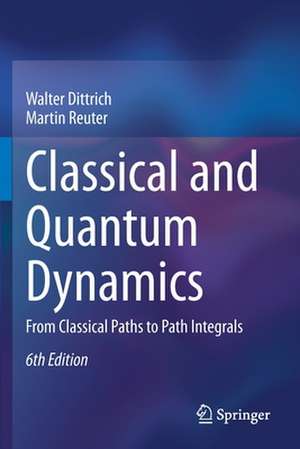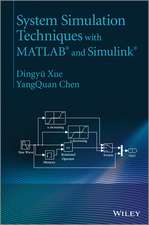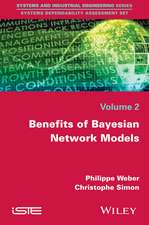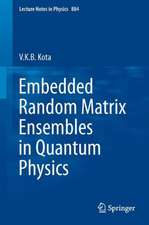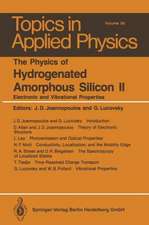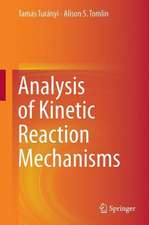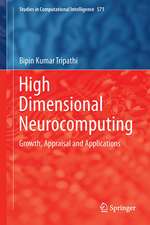Classical and Quantum Dynamics: From Classical Paths to Path Integrals
Autor Walter Dittrich, Martin Reuteren Limba Engleză Paperback – 7 feb 2021
The sixth edition has been enlarged to include the Heisenberg-Euler Lagrangian, Schwinger’s source theory treatment of the low-energy π-ρ-N physics and general relativity, where Riemann’s (Einstein’s) ideas on space and time and their philosophical implications are discussed.
| Toate formatele și edițiile | Preț | Express |
|---|---|---|
| Paperback (3) | 366.11 lei 3-5 săpt. | +33.31 lei 6-10 zile |
| Springer International Publishing – 7 feb 2021 | 366.11 lei 3-5 săpt. | +33.31 lei 6-10 zile |
| Springer International Publishing – 8 oct 2015 | 479.87 lei 6-8 săpt. | |
| Springer International Publishing – 28 iul 2018 | 537.79 lei 6-8 săpt. | |
| Hardback (1) | 536.33 lei 38-44 zile | |
| Springer International Publishing – 7 feb 2020 | 536.33 lei 38-44 zile |
Preț: 366.11 lei
Preț vechi: 441.11 lei
-17% Nou
Puncte Express: 549
Preț estimativ în valută:
70.06€ • 76.08$ • 58.85£
70.06€ • 76.08$ • 58.85£
Carte disponibilă
Livrare economică 02-16 aprilie
Livrare express 18-22 martie pentru 43.30 lei
Preluare comenzi: 021 569.72.76
Specificații
ISBN-13: 9783030367886
ISBN-10: 3030367886
Pagini: 563
Ilustrații: X, 563 p. 307 illus.
Dimensiuni: 155 x 235 x 34 mm
Greutate: 0.79 kg
Ediția:6th ed. 2020
Editura: Springer International Publishing
Colecția Springer
Locul publicării:Cham, Switzerland
ISBN-10: 3030367886
Pagini: 563
Ilustrații: X, 563 p. 307 illus.
Dimensiuni: 155 x 235 x 34 mm
Greutate: 0.79 kg
Ediția:6th ed. 2020
Editura: Springer International Publishing
Colecția Springer
Locul publicării:Cham, Switzerland
Cuprins
Introduction.- The Action Principles in Mechanics.- The Action Principle in Classical Electrodynamics.- Application of the Action Principles.- Jacobi Fields, Conjugate Points.-Canonical Transformations.- The Hamilton–Jacobi Equation.- Action-Angle Variables.- The Adiabatic Invariance of the Action Variables.- Time-Independent Canonical Perturbation Theory .- Canonical Perturbation Theory with Several Degrees of Freedom.- Canonical Adiabatic Theory.- Removal of Resonances.- Superconvergent Perturbation Theory, KAM Theorem.- Poincaré Surface of Sections, Mappings.- The KAM Theorem.- Fundamental Principles of Quantum Mechanics.- Functional Derivative Approach.- Examples for Calculating Path Integrals.- Direct Evaluation of Path Integrals.- Linear Oscillator with Time-Dependent Frequency.- Propagators for Particles in an External Magnetic Field.- Simple Applications of Propagator Functions.- The WKB Approximation.- Computing the trace.- Partition Function for the Harmonic Oscillator.- Introduction to Homotopy Theory.- Classical Chern–Simons Mechanics.- Semiclassical Quantization.- The “Maslov Anomaly” for the Harmonic Oscillator.-Maslov Anomaly and the Morse Index Theorem.- Berry’s Phase.- Classical Geometric Phases: Foucault and Euler.- Berry Phase and Parametric Harmonic Oscillator.- Topological Phases in Planar Electrodynamics.- Path Integral Formulation of Quantum Electrodynamics.- Particle in Harmonic E-Field E(t) = Esinw0t; Schwinger-Fock Proper-Time Method.- The Usefulness of Lie Brackets: From Classical and Quantum Mechanics to Quantum Electrodynamics.- Green’s Function of a Spin-1/2 Particle in a Constant External Magnetic Field.- One-Loop Effective Lagrangian in QED.- On Riemann’s Ideas on Space and Schwinger’s Treatment of Low-Energy Pion-Nucleon Physics.- The Non-Abelian Vector Gauge Particle p .- Riemann’s Result and Consequences for Physics and Philosophy.
Notă biografică
Prof. Dr. Walter Dittrich was head of the quantum electrodynamics group at Tübingen University. His main research activities centered on gauge theories, in particular, on QED, stimulated in part by collaboration with Julian Schwinger. Walter Dittrich has worked for more than 20 years at centers like MIT, the Institute for Advanced Study at Princeton and the National Accelerator Laboratory at Stanford (SLAC). He has over 30 years of teaching experience and is one of the key scientists in developing the theoretical framework of quantum electrodynamics.
Prof. Dr. Martin Reuter is head of the quantum Einstein gravity group at the Institute for High Energy Physics at Mainz University. His research focuses on particle physics, quantum field theory and quantum Einstein gravity. He worked at the synchrotron facility DESY and the large hadron collider at CERN. He has more than 30 years of teaching experience in theoretical physics.
Prof. Dr. Martin Reuter is head of the quantum Einstein gravity group at the Institute for High Energy Physics at Mainz University. His research focuses on particle physics, quantum field theory and quantum Einstein gravity. He worked at the synchrotron facility DESY and the large hadron collider at CERN. He has more than 30 years of teaching experience in theoretical physics.
Textul de pe ultima copertă
Graduate students seeking to become familiar with advanced computational strategies in classical and quantum dynamics will find in this book both the fundamentals of a standard course and a detailed treatment of the time-dependent oscillator, Chern-Simons mechanics, the Maslov anomaly and the Berry phase, to name just a few topics. Well-chosen and detailed examples illustrate perturbation theory, canonical transformations and the action principle, and demonstrate the usage of path integrals.
The sixth edition has been enlarged to include the Heisenberg-Euler Lagrangian, Schwinger’s source theory treatment of the low-energy π-ρ-N physics and general relativity, where Riemann’s (Einstein’s) ideas on space and time and their philosophical implications are discussed.
The sixth edition has been enlarged to include the Heisenberg-Euler Lagrangian, Schwinger’s source theory treatment of the low-energy π-ρ-N physics and general relativity, where Riemann’s (Einstein’s) ideas on space and time and their philosophical implications are discussed.
Caracteristici
Perfect companion for courses on path integrals, advanced mechanics and quantum mechanics as well as semi-classical methods and non-linear dynamics Highlights the principle of stationary action as common starting point of classical and quantum mechanics Includes an introduction to Riemann's (Einstein's) ideas on space and time and their philosophical implications
Recenzii
“This is the fourth edition of a highly successful pedagogical book that combines classical and quantum dynamics, often viewed as disjoint subjects. … Its elementary exposition makes the book accessible to graduate students.” (Gert Roepstorff, zbMATH 1330.81001, 2016)
